It’s no secret that Hungary’s capital is one of the loveliest cities in Europe. Beyond the bright lights of Budapest, there are countless more beautiful places in Hungary that beckon – tranquil spa towns, rugged mountains, charming Danube river outposts, historic cities, and much more.
From natural wonders including Central Europe’s largest lake, Lake Balaton, to spectacular small towns, here are 23 of the very best places in Hungary to visit.
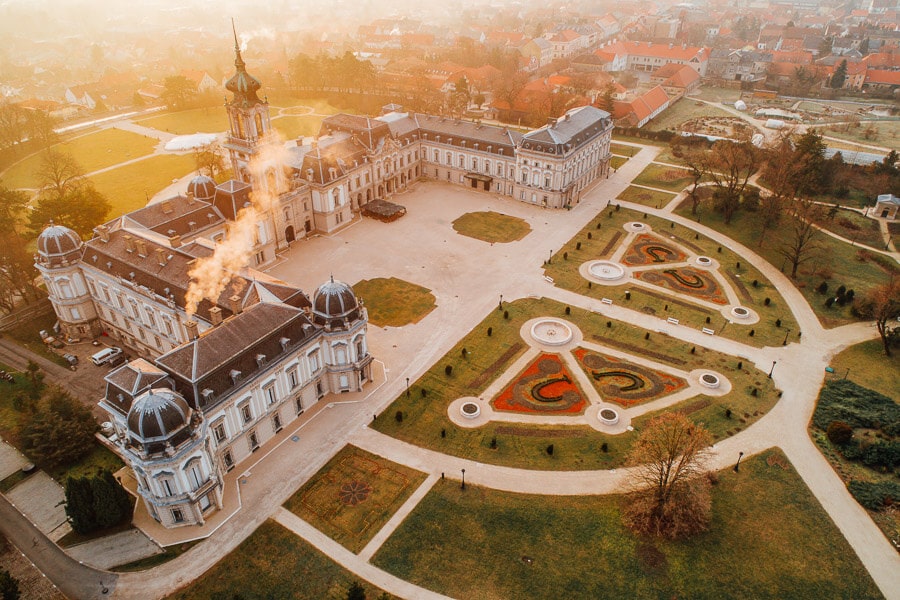
Please note: This post contains affiliate links, meaning I may earn a commission if you make a purchase by clicking a link (at no extra cost to you). Learn more.
Most beautiful cities in Hungary
1. Budapest, Hungary’s handsome capital

King among beautiful Hungarian cities, Budapest is replete with UNESCO World Heritage Sites, world-class museums, stunning architecture, and of course a legendary nightlife scene.
Whichever side of the city you’re standing on, Buda or Pest, there’s beauty around every corner: The grand Buda Castle; the stately Parliament building and its dancing Danube reflection; the tiled Matthias Church; the Wes-Anderson-approved historic thermal water baths – and the list goes on.
You can quite comfortably take in the best of Budapest in 2 days. First and foremost, to see the Hungarian capital from her best angle, head up to the Fisherman’s Bastion for incredible views from atop Castle Hill.
Roam the aisles at the Central Market Hall in search of fiery red paprika and salami, then sit back in one of Budapest’s legendary thermal spas. The Gellert Baths boast one of the most beautiful designs, while the steam rising off the outdoor Széchenyi Baths (the largest medicinal baths in Europe) is nothing short of iconic.
2. Esztergom, Hungary’s spiritual centre

Seat of the Roman Catholic Church and home to one of Eastern Europe’s most impressive cathedrals, the northern city of Esztergom is one of the most interesting places in Hungary. Its location on the Danube, a stone’s throw from Slovakia, bestows the whole city with a gorgeous river backdrop.
Esztergom Basilica, the largest cathedral in the country, naturally stands out as Esztergom’s main attraction. Its treasures include the largest canvas painting in the world – an altarpiece that recalls the Assumption of the Blessed Virgin Mary – the red-marble Bakócz Chapel, adorned with Renaissance motifs, and a deep Egyptian-style crypt.
Beyond the church, the episcopal neighbourhood of Víziváros dates to the 13th century and has an immersive medieval atmosphere. Its fascinating combination of Neoclassical buildings, European parks and Ottoman architecture reveals everything you need to know about Esztergom’s history and how the city has transformed over the centuries.
For your daily dose of Baroque and Rococo, head down to the main plaza, Szechenyi Square. Once a medieval open-air marketplace, it’s now a hub of sidewalk cafes and heritage monuments.
3. Eger, a multicultural city with Europe’s northernmost Ottoman minaret

Also located in northern Hungary, the historic city of Eger has everything you want in a beautiful Hungarian city: Thermal baths, Baroque architecture, a legendary food and wine scene, and of course a stunning castle to top it off.
If there’s one landmark that sets this city apart from its peers, it’s the Eger Minaret, the northernmost Ottoman minaret in Europe. It harks back to the 17th century when this part of Europe was besieged by the Turks. In 1687, Eger was freed from the Ottoman yolk and nine of its 10 minarets were eventually destroyed – save for one, which stands in its original position. Brave the 100-odd steps to the top balcony for the best views of the city.
Eger Castle is unique in that it contains the ruins of a 10th century cathedral. A tour of the grounds also reveals a coin museum and art gallery dedicated to Hungarian masters. No visit to Eger is complete without throwing back a glass or two of Egri Bikavér, literally ‘Bull’s Blood of Eger’, a local red wine as robust and full-bodied as the city itself. If you’re eager for more, the Eger Wine Region is right on the city’s doorstep.
4. Gyor, the pearl of Baroque architecture
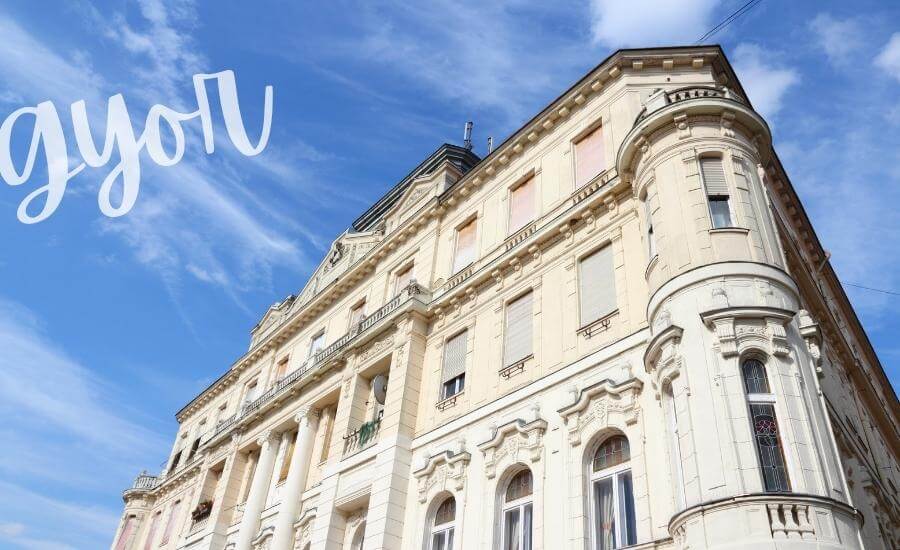
An easy day trip from either Budapest or Bratislava in Slovakia, Gyor is a great choice for an alternative European getaway. This river city is a treasure box of Baroque buildings, boasting hundreds of architectural wonders and heritage-listed properties.
The so-called ‘pearl of Baroque architecture’ is small and easy to get around on foot. As you wander, gaze at the Gyor Cathedral (Nagyboldogasszony-székesegyház), a Romanesque church from the 14-15th centuries, and take a spin in Bécsi kapu, widely considered to be Hungary’s most beautiful Baroque square.
Wander deeper into the old town to discover rows of pastel-coloured facades, smaller churches and pretty palaces. Eventually you’ll find yourself in front of the magnificent Town Hall, designed by Neo-Baroque architect Hubner Jeno in the late 19th century.
5. Debrecen, Hungary’s second-largest city and the departure point for Hortobagy National Park
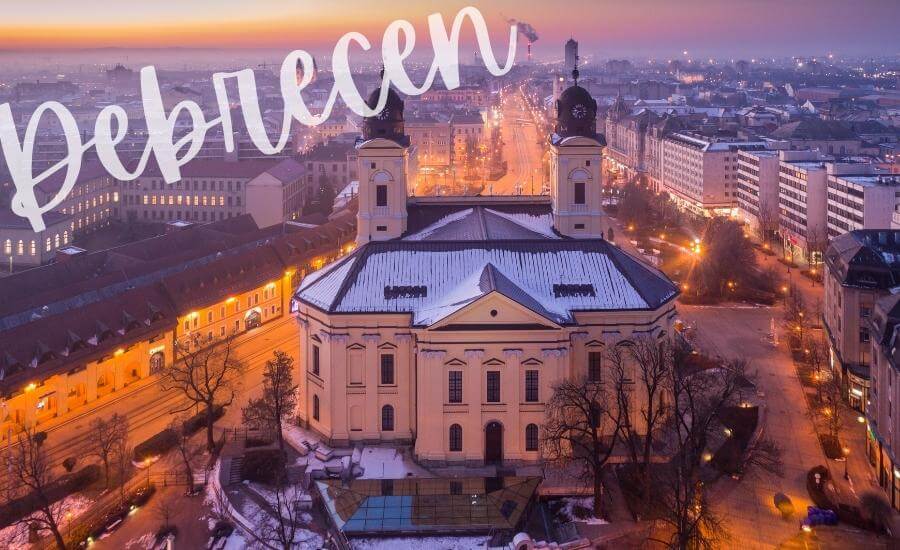
One of the largest cities in Hungary (second only to Budapest), Debrecen actually served as the country’s capital for a few short years at the end of WWII. Its stature and status is evidenced in the many important institutions housed here, including the University of Debrecen, the nation’s oldest continuously operating university.
The lemon-yellow Great Church, a symbol of Protestantism in Hungary, and its adjacent museum reveal the city’s Calvinist history. Another must-see is the Déri Museum. Not only is the building itself an icon, but the collection of local art and handicrafts on display inside is wonderful.
A short drive west of the city centre will bring you to Hortobagy National Park, the heart of Hungary’s Northern Great Plain region. Here you’ll find the largest continuous native grassland steppe in Europe and one of Hungary’s three Dark Sky Preserve areas. Nature’s beauty is abundant here throughout the year – but for something truly memorable, visit in autumn when the great crane migration takes place.
6. Keszthely, a historic market town on the shore of Lake Balaton

The charming city of Keszthely sits on the western shore of Hungary’s largest lake, Balaton. Established in the 13th century, it has served as a market town since 1421 – meaning it was given the royal OK to host a regular traders market. This set it apart from other settlements on the lake and accelerated Keszthely’s development.
One can reminisce about those romantic medieval days in the main square, Fő tér, where cute cafes have popped up in the place of market stalls. Our Lady of Hungary Church and the impressive Premontrei Szakgimnázium (Vocational High School) building hem in the open plaza.
Keszthely’s biggest attraction is 10 minutes’ walk from the square. Built between 1745 and 1885, the Festetics Castle is a Baroque palace of monumental proportions with an English-style garden out front. It now houses the Helikon Palace Museum, where you can discover some of the surviving Festetics family treasures, including a massive collection of books, portraits, and even horse carriages.
7. Veszprem, one of the oldest Hungarian cities
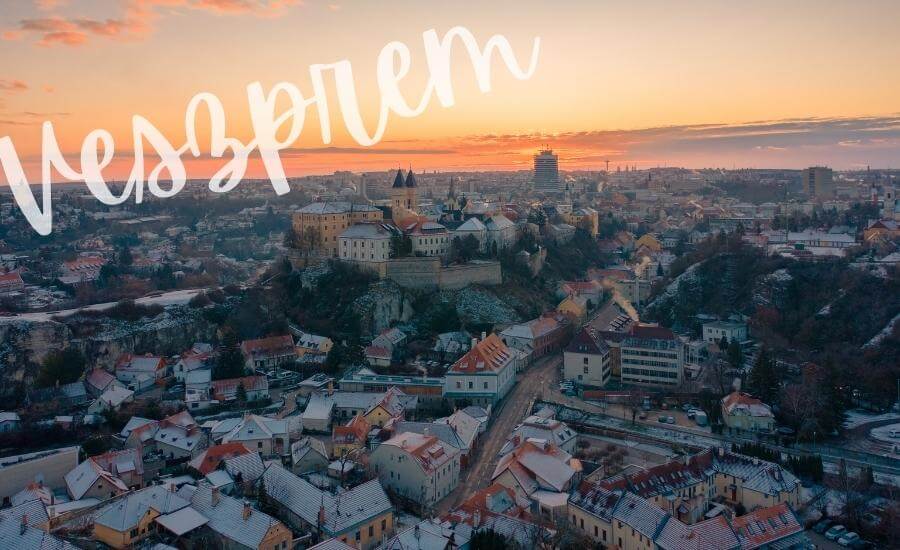
Just north of Balaton, Veszprem is a city that’s often overlooked by tourists despite its rich history. One of the oldest urban settlements in Hungary, it’s sometimes called ‘the City of Queens’ – that’s because Veszprem was a favourite of Queen Gisella, the wife of King St. Stephen. The pair are immortalised in a larger-than-life statue positioned atop one of the city’s many hills.
Back on street level, scores of beautiful buildings (including the Canon House) mixed in with 13th century ruins such as Margit romok make Veszprem one of the most unique places in Hungary to visit. Enter through the historic Heroes’ Gate to reach Veszprémi Vár, Veszprem’s grand citadel that encompasses a square, several museums and a chapel.
With dozens of hilltop lookout points and beautiful reserves and lakes on all sides, Veszprem strikes a perfect balance between city and nature.
8. Sopron, a medieval city near the Austrian border
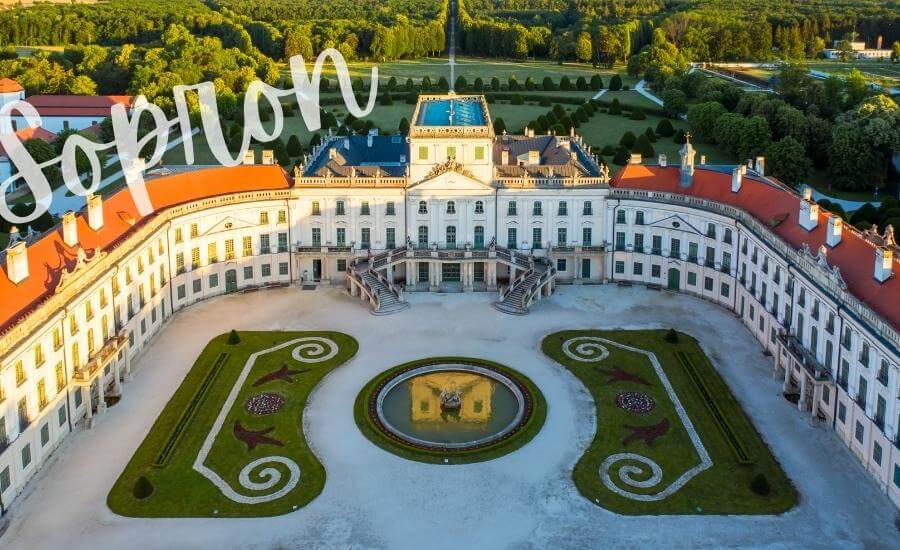
Nestled in the country’s far north-west, Sopron is just a few kilometres away from the Austrian border and can be reached in under an hour from Vienna by road. It’s majestic forum belies the city’s history as an outpost of the Holy Roman Empire. Then known as Scarbantia, it was strategically located on the Amber Road trading route.
Sopron’s breezy downtown area was surrounded by a high wall and moats during the Middle Ages, and this ended up playing a big role in how the modern-day city streets took shape. This unique urban planning is best observed from above – climb the 200-step spiral stairway of the 13th-century fire tower for the best views. Two more attractions, the Gothic ‘Goat Church’ and Eggenberg House (now the Sopron City Hall) are both within walking distance of the main square.
Further afield, the small town of Ferod near Sopron is home to the 18th-century Esterhazy Palace – AKA the ‘Hungarian Versailles’. This grand Rococo royal residence and palatial garden has a wonderful museum.
9. Pecs, a European Capital of Culture

Much like Eger, Pecs has always been a multicultural Hungarian city thanks to its centuries-worth of Celtic, Roman, Ottoman and Austro-Hungarian history. The nearby Mecsek hills were once mined for their metals and mineral waters – today, they form a beautiful backdrop for the city, which is bordered by rolling plains on one side, and the ambling Drava river (which forms part of the Croatian border and flows all the way to Belgrade) to the south.
Pecs is the home of Pyrogranite, an ornamental ceramic developed in 1886. Used widely under the name Zsolnay, the colourful tiles dress dozens of important buildings in the former Austro-Hungarian Empire, including Matthias Church in Budapest, the Bishop’s Palace in nearby Novi Sad, and St. Stephen’s Cathedral in Vienna.
One of the most underrated European cities, Pecs finally got the attention it deserves when it was named a UNESCO European Capital of Culture in 2010. Festivities centred on Pecs Cathedral, one of the most beautiful churches in Hungary. An Early Christian Mausoleum and the 16th-century Mosque of Pasha Gazi Kasim are also counted among Pecs’s top sights.
10. Szeged, the home of Hungarian paprika!

Hungary’s third-largest city sits on the Tisza river at the tripartite border with northern Serbia and Romania. Just 45 minutes by road from Subotica and two hours from the Romanian city of Timisoara, Szeged shares similarities with both.
Art Nouveau is the order of the day in Szeged, where jaw-droppingly beautiful Succession buildings stand proudly on almost every street corner. If you’re an architecture-lover, then Reök Palace, Gróf palace, the Szeged Water Tower and the Ungar-Mayer Palace should all be on your list. Characterised by flowing lines and dripping with pretty floral motifs, each one is a true work of art.
Another thing that places Szeged among the top Hungary tourist spots is its association with a famous food product, paprika. Naturally sweet Szeged spice paprika is prized throughout the country. Legend says that Széchy Mária, the wife of the local Count, took a liking to the spice and started growing it in the gardens of Szeged’s Franciscan monastery in the 1600s – making this the ‘birthplace’ of paprika in Hungary.
Beautiful small towns in Hungary
11. Holloko, a UNESCO World Heritage Site
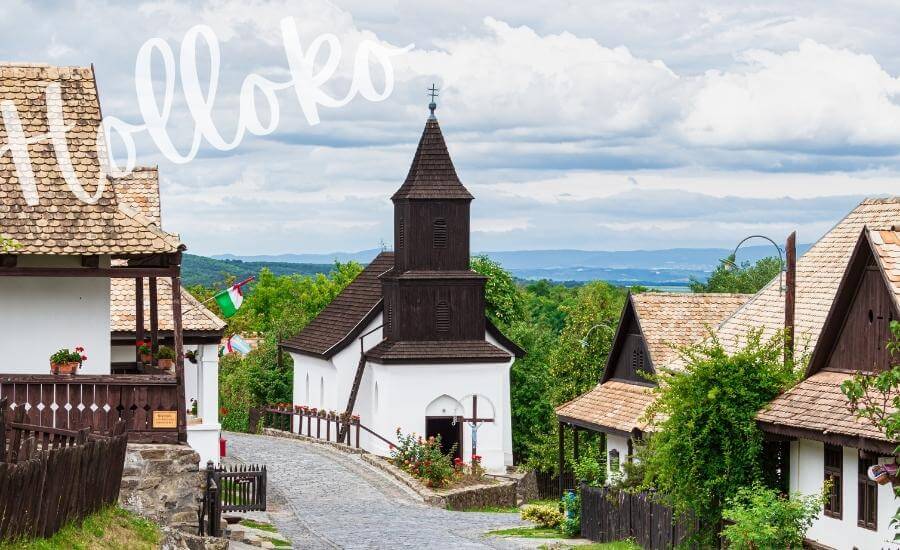
In the valley of the Cserhát Mountains, just under 100 kilometres northeast of Budapest, lies the beautiful village of Holloko. A UNESCO World Heritage Site, it was registered in 1987 thanks to its 700-plus-year-old castle that was built shortly after the Mongol invasion as a defence against future onslaughts.
For the romantics at heart, there’s a legend attached to the castle – one that is still widely regarded as true. The story tells of a lord who built the castle, then snuck over to the squire living on the land next to his and snatched his beautiful bride, keeping her as his trophy, a prisoner within the castle walls. What the lord didn’t know, however, was that a witch who happened to be friends with the devil was once the bride’s nursemaid. The witch persuaded the devil to transform his sons into ravens who then stole stones from the castle until the beautiful prisoner was set free at last. The collection of stones were then used to build a new castle named Holloko, which in Hungarian means ‘Ravenstone’.
The village consists of a single street and is home to an estimated 400 people. Although most houses have been made modern inside, they are all still of the old-style architecture outside – and very well preserved at that. So much so that while strolling down the main (and only) road, it’s easy to imagine you’re back in the 18th century.
12. Koszeg, the jewel box of Hungary

The castle-town of Koszeg sits at the foot of the legendary Alps mountain range, near the Austrian-Hungarian border in western Hungary. Also known as the ‘Jewel Box of Hungary’, this charming town with cobbled streets, countless historical monuments and preserved medieval structures enjoys some of the cleanest air in the country, thanks to the fresh Alpine air that gets pushed down by the western winds.
Koszeg houses Irottko Lookout tower: a structure situated on Hungary and Burgenlands’ highest peak that offers unparalleled views from a staggering 883 metres up. Right at the borderline of the former Iron Curtain, the tower is unique in that one part stands on Hungarian grounds, while the other piece belongs to Austria.
This beautiful town is not only rich in history, but its almost perfectly preserved medieval structures provide a romantic atmosphere of dimly lit streets. Koszeg was awarded a Hungarian architecture prize (the Hild Prize) for the preservation of its architectural heritage – so you know it’s the real deal.
13. Szentendre, the town of artists

To the north of Budapest at the gateway to the Danube Bend, the scenic town of Szentendre is also known as the ‘town of artists’ because of its decorative architecture. Colourful houses separated by narrow, cobbled streets, elaborately decorated churches and small independent art galleries complete the picture.
A host to seven churches and more than 15 art museums and galleries, this riverside town was made famous after the Netflix TV series The Witcher used the museum grounds as a set for the main character’s home village.
Beautiful lakes in Hungary
14. Lake Balaton, Central Europe’s largest lake

The biggest lake in Central Europe, Lake Balaton – which is a freshwater lake – is one of the top resort towns in the country. Though some might associate Balaton with high-rise hotels and chic beaches, there is a softer side to the lake in its romantic spa towns and rolling volcanic hills that stretch into the distance from the Transdanubian shoreline.
The northern regions contain the Balaton Uplands National Park which, along with hiking trails and protected wetlands, is where some of Hungary’s most prestigious vineyards are located. Of course the biggest attraction here is water activities: swimming, rowing and rafting are all available on the lake during the warmer months.
15. Lake Bokodi, a floating village straight from a story book

Lake Bokodi and its floating houses appear to be drawn straight from a book of Hungarian fairy tales. The little A-frame cabins stretch out for three kilometres, suspended over the water and linked to the shoreline by long, meandering boardwalks.
Below the surface, the rich marine environment serves as the perfect breeding grounds for fish. Bokodi quickly became a paradise for anglers, who started building their cabins on stilts over the lake.
You wouldn’t know it by looking at it, but Lake Bokodi is man-made: Specifically, it was created as a cooling pond for the Vertes Power Station in 1961. Cold pond water was circulated in and hot water released out, so the lake never froze, even in the depths of the most bitter Hungarian winter. This recently changed, however, and the lake now freezes over, limiting the angling industry and tourism opportunities for locals.
16. Lake Heviz, a historic spa town

Also in the Balaton region, west of the main lake, Heviz is a much smaller lake and spa town in Zala County. Its size may pale in comparison to Balaton, but this lake is special: Hevíz Lake is the largest natural and swimmable hot water lake in the world, which geologists think erupted to the earth’s surface 20,000 years ago.
Unsurprisingly, everything in this little town revolves around the water. Tour the ancient Roman Ruin Gardens, the Egregy Cellars and the Tomb of the Roman Soldier, and discover the Russian Baths and many spa retreats positioned around the thermal lake.
17. Megyer-hegy Tarn, an old mine transformed into a hiker’s paradise

Situated in the Sarospatak Nature Reserve, Megyer-hegy Tarn is one of the most popular hiking spots in Hungary’s volcanic Zemplen Mountains. Originally a millstone mine, Megyer-hegy was created when rhyolitic tuff stone was saturated by silicic acid and hardened as a result. The natural post-volcanic formations created the blob-shaped lake we see today.
If you have a combined love for nature and wine, there is a 4.5-hour hike here that showcases both, leading you first to the incredible Nagy-Bot rocks geyser cones, and then to the Gomboshegy & Kőporos historical cellar systems.
Beautiful places in Hungary: Nature & scenery
18. Danube Bend (Dunakanyar), one of the best views of Europe’s second-longest river

Northern Hungary is all about the natural scenery – and it’s hard to beat the panoramic views of the Danube from the area around Visegrad, north of Budapest and Szentendre. Here, the river makes a natural horseshoe bend as it momentarily dips in towards Danube-Ipoly National Park.
The Danube Bend or Dunakanyar as it is known is both a strategic spot and a place of awe-inspiring beauty. Fortifications dots the hills, once charged with keeping a watchful eye out for enemy forces. Castle Visegrad is the most famous and along with the Visegrad Royal Palace, it makes for a great base for exploring the rest of the landscape.
Various marked viewpoints such as Juliánus Kilátó can be reached via easy hiking trails. For a more challenging walk – but an even better panorama of ‘Danube’s Knee’ – summit the 639-metre-high Prédikálószék peak and its lookout tower. The scenery is not dissimilar to the Pavlova Strada Viewpoint over Lake Skadar in Montenegro.
19. Tihany, home of Hungary’s lavender fields

Just when you thought Balaton couldn’t get any more beautiful, summer arrives and the lavender fields bloom, throwing a dusky purple blanket over the lake’s edge. Immortalised by countless Hungarian poets and musicians, Tihany is without a doubt one of the most beautiful places in Hungary.
French Lavender was first planted on the Tihany Peninsula on the lake’s northern edge in the 1920s. What started as small fields belonging to the Benedictine Abbey soon grew into large plantations, bringing a touch of Provence to Hungary!
The annual Lavender Festival draws thousands of visitors from across Europe who come to pick flowers, frolic in the fields, and sample delicacies flavoured and scented with lavender. Since this is the busiest time of year on Balaton, it’s the perfect opportunity to do a road trip and explore the lake’s edge at your own pace.
20. Tokaj, Hungarian wine country

One of the seven main wine regions in Hungary, Tokaj is a historical viticultural area that lies in the northeastern part of the country. As the birthplace of a wine once coveted by royalty, Tokaj has deep cultural value and draws in many tourists to its historical cellars as a result.
Tokaji sweet wines produced in Hungarian cellars are similar to those found in Slovakia’s counterpart wine region. Also called Tokaj, it stretches over the two countries’ borders, uniting the neighbours and their love of wine. Tastings and tours are available at small and larger cellars.
21. Poroszlo, a quiet town on Lake Tisza

Situated on the right bank of the Tisza river in northern Hungary’s Heves County, the ancient village of Poroszlo was declared an official market town in 1445. Although it may not be a popular destination quite yet, it’s a rewarding travel experience for those willing to wander off the beaten path.
The most traditional (as well as the richest) experience for visitors to Poroszlo is horseback riding. Trails lead through 1,000-plus-year-old oak forests to the tranquil banks of the river Tisza. A summer destination, there is also a swimming beach, fishing, canoeing and boating on offer. Come winter, you can tour the landscape in a horse-drawn sleigh, and participate in ice fishing, sledding or ice skating.
22. The Szalajka Valley, Lipizzan horses & forest hiking

Sitting 400 metres above sea level, west of the Bükk Mountain range in northern Hungary, the treasured Hungarian village of Szilvasvarad is famously the home of the Lipizzan horses. Eight stocks of the 400-year-old stallions are bred here. Visitors can learn more about Szilvasvarad’s equine history on a tour of the historic stables or during a visit to the Lippizan history exhibition.
You’ll need to rely on your own two feet to discover Szilvasvarad’s other attractions: This is the gateway to one of Slovakia’s most beautiful natural and cultural landscapes, the Szalajka-völgy or Szalajka Valley, part of Bükki National Park. One of the best hiking spots in Hungary, the valley features a 17-metre-hill waterfall, Fátyol, caves, springs and glades – plus dense forests that change colour with the seasons.
The journey is half the fun: Ride the narrow-gauge railway from Fatelep along Hungary’s steepest railway track without cogwheels, passing pretty fish ponds and scenic picnic spots.
23. Lillafured, palatial digs & hanging gardens
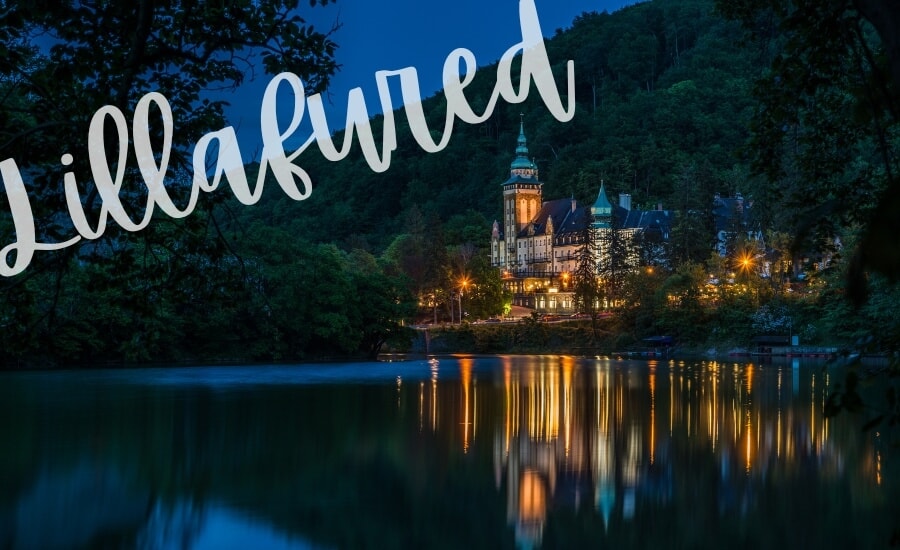
On the opposite side of the Bükk mountains range, the small town of Lillafured is a popular climactic resort on the shores of Lake Hámori. Established in the 1890s, it has a long and fascinating history tied to Hungary’s royal family.
The highlight is undoubtedly Lillafured Palace, built in the neo-Renaissance style in 1930 on Hámori Lake. It now houses a 4-star hotel for a touch of luxury amidst nature. Even if you’re not staying the night, drop in to dine at the King Matthias restaurant, where vivid stained glass windows depict the many castles and fortifications found throughout Hungary.
Adjacent to the hotel, Lillafured’s hanging gardens are surrounded by pretty streams and an artificial waterfall – the highest in the entire country at 20 metres tall. You can also find caves in the vicinity, and a little further afield, trout farms that sell fresh smoked and grilled fish.